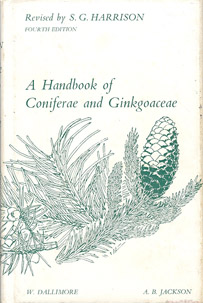 Edward Arnold, London, 1974, 4th edition, 729 pages, black-and-white photographs, line drawings, bibliography, index
Edward Arnold, London, 1974, 4th edition, 729 pages, black-and-white photographs, line drawings, bibliography, index
| PREFACES | v |
| LIST OF PLATES | xii |
| LIST OF FIGURES | xv |
| PRINCIPAL WORKS CONSULTED | xvii |
| INTRODUCTION, with notes on classification, nomenclature, morphology, economic uses, propagation, and cultivation | 1 |
| SYNOPSIS of Families and Genera | 15 |
| KEY TO GENERA Cultivated in the British Isles | 23 |
| DESCRIPTIONS OF GENERA AND SPECIES arranged in alphabetical order | 27 |
| INDEX | 655 |